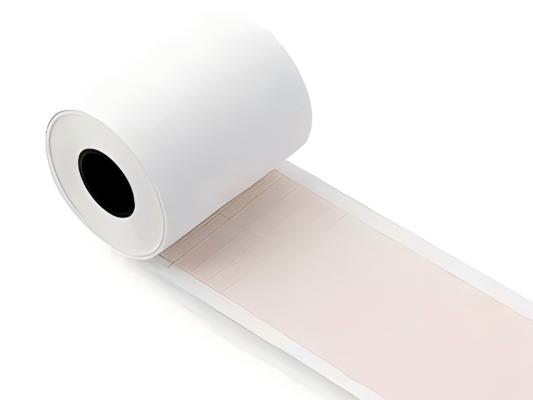Overall views
Standard size available as follows:
50mmx20m, 50mmx30m, 80mmx20m, 210mmx30m, 216mmx20m available.
About ECG paper roll
ECG paper roll is a crucial part of electrocardiography. It records the waves/signals of the ECG machine and aids the machine in printing proper and precise results to evaluate the heart's condition. The paper rolls are incredibly smooth since they are made from the highest-quality medical-grade paper to ensure that the ECG machine's sensitive components are not damaged. Several types of ECG paper are available on the market today. Below is a detailed dive into ECG paper roll and everything there is to know about them.
The standard ECG paper speed
Here, speed refers to the rate at which an ECG machine produces a trace on the paper roll. The standard ECG paper speed is 25 mm per second, wherein:
1 SMALL square (1mm) = 0.04 sec (40ms)
5 SMALL squares (5mm) = 1 large square = 0.2 sec (200ms)
5 LARGE squares = 1 second
P.S. Standard rate calculations will be modified in accordance with different speeds and ECG roll sizes.
How to load paper in an ECG machine
To learn how to load paper in an ECG machine, first turn off the machine to ensure that it is turned off. Then, open the paper compartment and remove any old paper, taking note of its orientation. The second step is to unwrap the new roll of ECG paper and ensure that the type and size of the paper complement your ECG machine.
The next step in understanding how to load paper in an ECG machine is to place the roll into the paper compartment and pull a few inches of paper as per the markers or guides on the machine. Then, close the machine properly and thoroughly. Lastly, run a test print on the ECG machine to ensure the paper is printing correctly.
P.S. Follow the specific instructions on the ECG machine to ensure proper insertion of ECG paper types.
How to read an ECG machine
After understanding how to load paper in an ECG machine it is also important to know how to read the machine correctly. One of the most critical components of interpreting an ECG is understanding what the different things on the paper indicate. The horizontal axis consists of larger squares, each 5 mm long and representing 0.2 seconds, which are then divided into 5 smaller squares. On the vertical axis, each small square subdivision is 1 mm long and represents 0.04 seconds, implying that 250 small squares = 50 large squares = 10 second.






